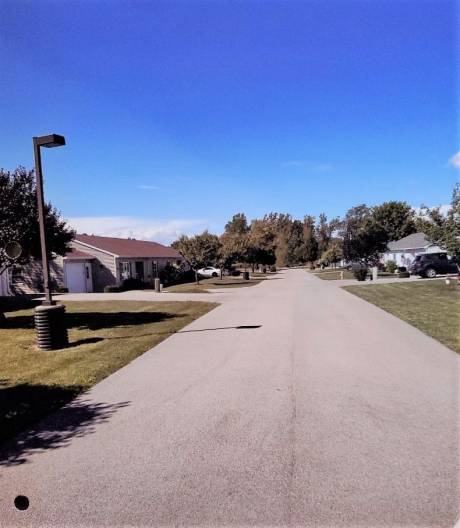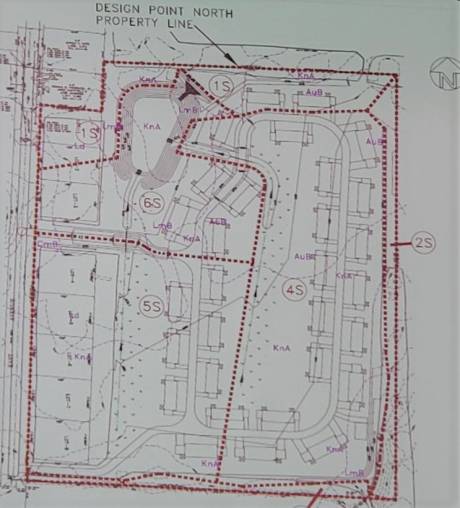Le Roy Village Board rejects Batavian's bid to develop senior housing community, single-family building lots

Batavia businessman Eric Biscaro’s attempt to construct a 30-duplex unit senior housing complex off East Avenue and develop 18 single-family home building lots on that street came to a screeching halt at tonight’s Le Roy Village Board meeting.
Biscaro introduced the project back in April to the Genesee County Planning Board following discussions with Village Mayor Greg Rogers about a development that could provide upscale housing for residents age 50 and over and generate much needed tax revenue for the municipality.
When residents in the East Avenue, Poplar Lane and Orchard Drive neighborhood found out about it, however, many of them rallied together to oppose the village board’s desire to change the zoning from Residential to Planned Unit Development to accommodate Biscaro’s venture.
Those against the plan voiced their opinions at a couple public hearings, citing reasons such as it was a bad fit for the area and concerns over stormwater runoff and increased traffic.
At tonight’s session, held at Memorial Auditorium on Trigon Park, Rogers clearly was disappointed as he communicated the fate of the project. Three of the five board members – Bill Kettle, Richard Tetrault and Ray Yacuzzo -- said they were going to vote against it. Rogers and Jim Bonacquisti said they were for it.
It never came to an official vote because a resolution to accept the required State Environmental Quality Review died for a lack of a second. As a result, the resolution to change the zoning was not considered.
ROGERS: 'HE WAS THE RIGHT GUY'
Rogers said he thanked Biscaro and the board for the time and effort put into this subject.
“I respect my fellow board members and their professionalism and their opinions; that’s how the system works,” he said. “However, I will say, I still in my heart believe that Eric Biscaro was the right guy for the right piece of property at the right time.
“I’m glad he came to Le Roy and he wanted to be part of this community. He looked at a lot of different things. He looked to rescue Genesee Street. There are vacant houses on East Avenue that we looked into getting into rehabbing.”
The mayor said the village is going to lose “a possible asset here” but reiterated that this is the way the system works.
He then acknowledged that he did not find any satisfaction in presiding over the public hearings.
“I'm totally glad they're over, and you'll never get me to do another one of these,” he said. “So, thank you all for your time … And Eric, I'm terribly sorry. I appreciate you taking the shot on Le Roy. I’m sorry I dragged you into this.”
BISCARO: MISSING OUT ON TAX BENEFITS
Rogers then asked Biscaro if he wanted to say something and he proceeded to bring up comments earlier in the meeting when the board held a public hearing about its decision to opt out of the adult use cannabis retail dispensaries and on-site consumption places under New York's Marijuana Regulation & Taxation Act.
“I heard a lot today about empty stores on Main Street,” Biscaro said. “Le Roy, like a lot of places, has been losing population over the last 20 years. And I heard about tax money … It would be a whole lot more tax in this than any pot store locally; constant – coming in every year for forever.”
Biscaro said that developers aren’t knocking the door down to do business in the village.
“Fine, give me your opinions, but to make a decision on something … nobody's promoting their money to go and look at South Avenue, no one’s even looking there,” he said. “You said to look towards the next street down. Nobody's looking there. To the developer’s eyes, those types of reasons make no sense to us. It's not what we’re proposing for development. We're proposing that we should stay right there and just look right there.”
Finally, he told the board that he was warned about pursuing a project in Le Roy.
“That's one thing I heard over and over and over again. ‘Are you kidding me? You're going to Le Roy. They don’t move on anything.’ This is what I was told over and over again by people that do business,” he said.
“You might want to be careful with that in your future because it's the developers … they’re not going to look (at this town) because nothing happens. That would be the complaint from the development person. I’m not sitting here stabbing anybody (as) I'm not jealous of you sitting in your seats, but sometimes you got to take a little bit and go forward. That’s something I'd recommend, not that that means anything here.”
VILLAGE TRUSTEES SPEAK OUT
Bonacquisti, Kettle, Tetrault and Yacuzzo addressed those in attendance prior to Rogers and Biscaro.
“I supported this project from early on -- single floor patio homes for 55 (actually 50) and above is needed in our community,” Bonacquisti said. “Keep in mind, this is my opinion. It's not your typical rental units. It was going to be a bump to our tax base (and) it was going to develop an area that has not been developed for 50 years.”
He contended that the response he received from village residents was “positive” except for those who live in the immediate area. And he said turning Biscaro’s project down could dissuade others from considering Le Roy.
“This is the second time that I've been on a board that a developer has come in the last 10 years and is trying to do something different in the community. And it's the second time they've been turned away,” he said. “My fear is no other developer will come to Le Roy. They see what has happened over the course of the last 10 years.”
Kettle said he did the math and believes that this is not “the best plan for the comprehensive plan that we have in the Village of Le Roy.”
“I think there's a better plan out there. I think there's a plan that will bring tax dollar revenues, 100 percent of assessed values to the coffers -- the school coffers, the village coffers, and the town and county coffers,” he said, implying that he didn’t agree with the payment in lieu of taxes agreement that Biscaro worked out with the Genesee County Economic Development Center.
Tetrault, mentioning that he has been involved in construction, said he liked Biscaro’s plan but couldn’t vote for it because he hasn’t been made aware of the full scope of the project. Thus, he is wary of potential problems down the road.
TETRAULT: QUESTIONS WENT UNANSWERED
“And some of the questions I had, I really never got clear answers for,” he said, noting that he was hoping to see a more detailed set of blueprints that encompassed all aspects of Biscaro’s proposal.
Yacuzzo said that connecting East Avenue with South Avenue (one of the conditions of the project) would be a terrible mistake, leading to “a crush of traffic” as people would use it as a shortcut on weekdays to get to the Le Roy Central School and after football games.
“If there's a connection to East Avenue anywhere else, I think it should be to Asbury Road and that would not serve as a shortcut … That's the sort of plan that I’d like to run by our planning board.”
As he was leaving, The Batavian asked Biscaro if he would consider a revised plan or another location in the village.
“No, it’s done,” he said.
Photo: Le Roy Village Board members at tonight's meeting, from left, Richard Tetrault, Ray Yacuzzo (speaking), Mayor Greg Rogers, Bill Kettle and Jim Bonacquisti. Photo by Mike Pettinella.
Previously: Patio homes/building lots development project is back on the Le Roy Village Board's agenda for tonight
Previously: East Avenue area residents defend their 'jewel' of a neighborhood at public hearing on Le Roy development


